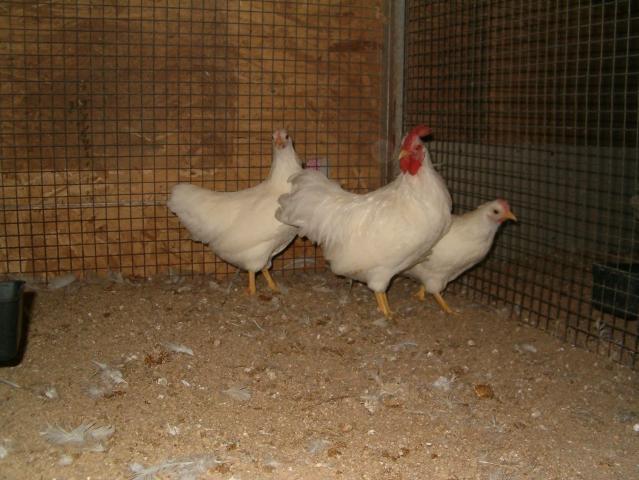Quote:
Thanks Dan, I am glad I found the group and I am happy to share my knowledge.
My original breeding was a trio of White Leghorn bantams, a White Rock bantam rooster, and a quad of Silver Dorking bantams. I mated Dorking hens to the Rock and Leghorn males. I mated the Dorking rooster to the Leghorn hens. I had amazing hatches from this cross, one setting of 96 eggs hatched 89 chicks all within hours of each other. I was amazed because I have never had that kind of hatch, that close together. However, overall my hatches were around 75% of fertile eggs. I believe that came from the "hybrid vigor" effect of crossing breeds.
If/when I do it again, I will not use Silver Dorkings. The salmon breast was a royal pain to deal with. That salmon would eventually start showing through the white. In the end the hens would be a few years old before it showed up, but it always did. If I had to do it over I would certainly use White Dorkings if at all possible. However, I guess I wouldn't rule out that if I didn't use the Dorking hens originally, I may not have had a problem with the breast.
Here is a little history on my original birds.
1. The Leghorns were from a Ideal Hatchery. I feel this did help their production since the other birds were from exhibition flocks. They certainly were not the type Leghorns.
2. The Dorkings came from Duane Urch. They were nice birds with great type. The color was pretty decent with the hens much stronger in color than the males.
3. The White Rock was a throw back white that was produced from a Buff Columbian Rock mating. He was the only white bird that was ever produced from that White Rock mating.
Based on this I believe the Peach Laced gene came from the Buff Columbian history and possibly showed up due to the mixing with the salmon breast of the Dorking. The variety was extremely rare. I produced 4 of the variety (from white breeding) in 10 years of breeding. I would guess that the variety showed up around 1 time in every 200 chicks. When they hatched they stood out from the other white chicks. They had the same color chick fluff, just much more intense or bright. It is hard to explain; all I can say is when the first one was hatched I knew immediately that there was something different about that chicks color. When you bred two Peach Laced together they produced lots of white chicks, and I only hatched 2 or 3 chicks of the variety from setting the eggs of the parents.
As a side note, I also produced plenty of the red pyle's that also showed up during the original creation. I was going to work with them until the peach showed up, then I had to decide what to pursue as I didn't have lots of room at the time for breeding birds. Which I guess I need to back up and note that the majority of this breeding program took place in my current home which is in the downtown of the city I live in. So what I am getting at is the space was extremely limited.
A final thought on the breeding. I focused first on getting the Lamona type and the plan was to pursue the color later. To my surprise, when I did this, the color came naturally as the type developed. Along with this, as I selected for type the white egg shell color and ear lobe colors also came naturally. Of course with the exception of that blasted salmon breast that always reared it's ugly head. The one place I neglected to focus on, which I would watch much closer the next time, is egg laying ability. My theory on that was that I was breeding for exhibition and didn't care that they wouldn't lay 200 eggs a year. I strongly encourage anyone working on the breed to closely monitor the laying ability. It is the laying and meat production abilities that made them valuable, that should not change or be sacrificed because they are being re-created or rescued.
 )
)

 )
)







